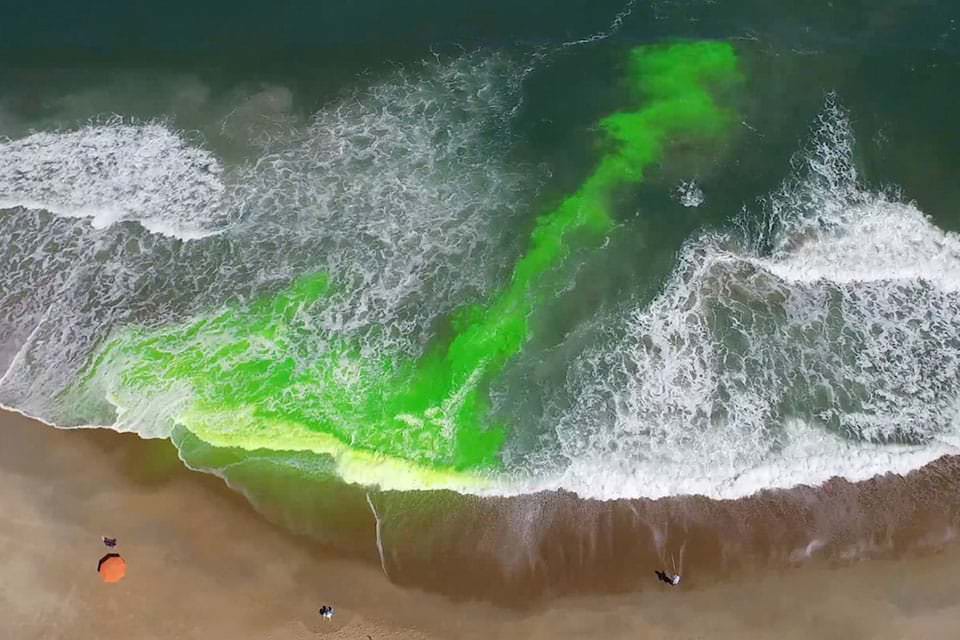Texas Shorelines: Know How to Escape the Grip of the Rip
Mar 22, 2023 By Sara Carney
3 minutes
 Green dye shows the path of the rip current.
Green dye shows the path of the rip current.COLLEGE STATION, Texas — Now that it’s spring and warmer weather is on the way, you may be planning a trip to the beach. And with Texas’ nearly 370 miles of coastline, there is a lot of beach to explore. Before you go, there are a few things you need to know about staying safe from rip currents.
According to the United States Lifesaving Association, approximately 30,000 rescues from rip currents in the U.S. each year.
“It’s the number one public safety risk at the beach in the U.S. and worldwide,” said Dr. Greg Dusek, NOAA senior scientist and rip current expert. In 2022, 98 rip current fatalities were recorded in the United States, according to NOAA, up from 74 in 2020.
Rip currents are sneaky and form where water appears to be calm. They generally appear where there is a gap in the line of breaking waves. Sometimes the water can appear darker where there is a rip current. You may even see sand and foam being pulled away from shore by the rip current.
Rip currents often form near piers, jetties and groins.
Rip currents can be from 100 to 400 meters long, 15 to 100 meters wide, and can last anywhere from minutes to months, according to NOAA. Rip currents typically travel at 1 to 2 feet per second but can reach speeds up to 8 feet per second, similar to the pace of the fastest Olympic swimmers.
Stay safe from rip currents by checking the surf conditions before you go to the beach. While at the beach, stay near lifeguards, and if waters are rough, don’t go past your knees.
Beaches on the Texas coast use the standard flag system from the International Life Saving Federation. Each flag has a meaning that details important information about beach conditions. Green means conditions are calm, but caution should be exercised. Yellow flags indicate medium hazard, meaning that some rip current activity is expected. Red flags mean high surf and strong currents are present, and that dangerous and intense rip currents are expected to form.
These flags are generally found at beach entrances and at lifeguard stations. Use these flags to make informed decisions about going to the beach and getting in the water. Just because a flag isn’t there, doesn’t mean there aren’t hazards present.
While rip currents will not pull you under the water, you can exhaust yourself if you try to swim against them. If caught in a rip current, don’t fight. Instead, try to float or tread water, yell and wave for help, and swim parallel to shore once you’ve escaped the current.
Other Resources:
weather.gov/safety/ripcurrent-fatalities
####
Texas Shorelines is a service of the Texas Sea Grant College Program at Texas A&M University. Texas Sea Grant is a unique partnership that unites the resources of the federal government, the State of Texas and universities across the state to create knowledge, tools, products and services that benefit the economy, the environment and the citizens of Texas. It is administered through the National Oceanic and Atmospheric Administration and is one of 34 university-based Sea Grant Programs around the country. Texas Sea Grant is a non-academic research center at Texas A&M University. The program’s mission is to improve the understanding, wise use and stewardship of Texas coastal and marine resources.
